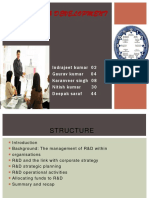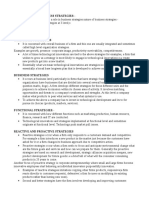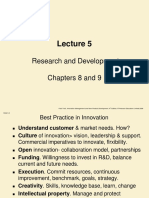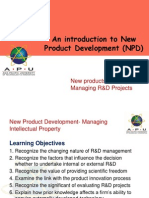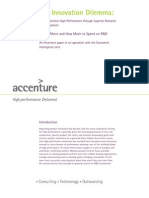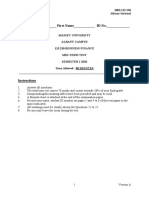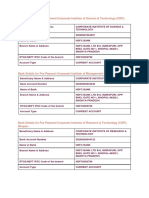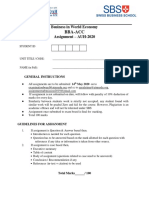Research and Development (R&D) is a critical area of business focused on innovating and
improving products, services, or processes. It involves a combination of scientific research and
practical development activities aimed at advancing knowledge and creating new or improved
solutions. Here’s a breakdown of what R&D typically encompasses:
1. Research
Purpose: To gain new knowledge or insights that can be applied to develop new products or
improve existing ones. Research can be fundamental (exploring basic principles) or applied
(solving specific problems).
Types:
Basic Research: Conducted to increase understanding of fundamental principles without
immediate commercial applications. Examples include studies on materials science or
biology.
Applied Research: Directed towards solving practical problems and developing new
technologies. For instance, researching new ways to enhance battery life in electronics.
Outcome: New scientific discoveries, technologies, or theoretical advancements that can inform
product development or innovation strategies.
2. Development
Purpose: To take the findings from research and translate them into practical applications, such
as new products, services, or processes.
Activities:
Prototype Development: Creating early models of a product to test concepts and refine
designs.
Product Testing: Conducting trials and evaluations to ensure the product meets quality
standards and customer requirements.
Process Improvement: Enhancing manufacturing processes or operational procedures
for better efficiency and cost-effectiveness.
Outcome: Tangible products, processes, or services ready for production or implementation,
often leading to marketable innovations.
3. Innovation Management
Purpose: To effectively manage and integrate new ideas into the business strategy, ensuring that
innovations are aligned with market needs and organizational goals.
Key Aspects:
� Idea Generation: Encouraging and collecting creative ideas from various sources,
including employees, customers, and partners.
Project Management: Overseeing R&D projects to ensure they stay on track, within
budget, and meet objectives.
Risk Management: Identifying and mitigating risks associated with new developments,
such as technical feasibility, market acceptance, or regulatory issues.
Outcome: Successful implementation of innovations that provide competitive advantage and
drive business growth.
4. Collaboration and Partnerships
Purpose: To leverage external expertise, resources, and technologies to enhance R&D efforts.
Types:
Academic Partnerships: Collaborating with universities or research institutions for
advanced research and development.
Industry Collaborations: Partnering with other companies or industry groups to share
knowledge, resources, and technology.
Government and Grants: Engaging with government programs or securing funding to
support research initiatives.
Outcome: Expanded capabilities and resources, accelerated development timelines, and shared
risk and reward.
5. Commercialization
Purpose: To bring R&D outcomes to the market and ensure they generate revenue and value for
the company.
Steps:
Market Analysis: Assessing market demand, potential competition, and pricing
strategies for the new product or service.
Launch Strategy: Planning the introduction of the new offering to the market, including
marketing, sales, and distribution strategies.
Post-Launch Evaluation: Monitoring the performance and customer feedback to make
necessary adjustments and improvements.
Outcome: Successful market entry of new products or services, leading to business growth and
profitability.
Importance of R&D
� Competitive Advantage: Companies that invest in R&D can develop unique products or
technologies that set them apart from competitors.
Adaptation and Growth: R&D enables companies to adapt to changing market demands
and technological advancements, fostering long-term growth.
Problem-Solving: It addresses current challenges and improves existing solutions,
enhancing overall efficiency and effectiveness.





